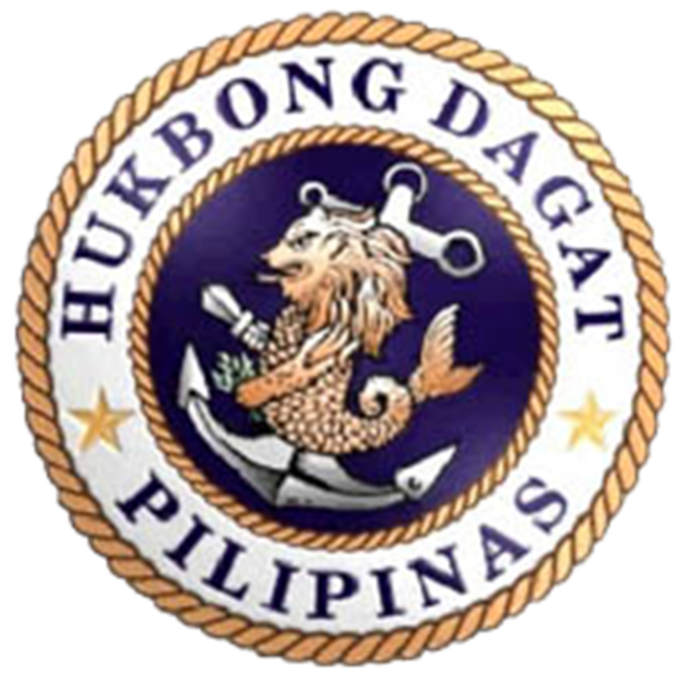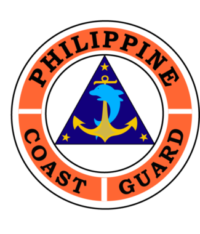
 After the ASEAN Leaders’ Summit decision in November 2017 to go, finally, for a Code of Conduct involving the 10 ASEAN member-nations and their Dialogue Partners, particularly the People’s Republic of China, the value of FVR’s strategic decision made 25 years ago to pursue the separation of the Philippine Coast Guard – from being one of the operating units of the Philippine Navy, AFP under the Department of National Defense (DND) into its rebirth as one of the major agencies under the former Department of Transportation and Communications (DOTC, renamed DOTr upon the creation of DICT) – can now be better appreciated.
After the ASEAN Leaders’ Summit decision in November 2017 to go, finally, for a Code of Conduct involving the 10 ASEAN member-nations and their Dialogue Partners, particularly the People’s Republic of China, the value of FVR’s strategic decision made 25 years ago to pursue the separation of the Philippine Coast Guard – from being one of the operating units of the Philippine Navy, AFP under the Department of National Defense (DND) into its rebirth as one of the major agencies under the former Department of Transportation and Communications (DOTC, renamed DOTr upon the creation of DICT) – can now be better appreciated.
From DND to DOTC. Let’s focus our attention on the recollections of former Philippine Coast Guard Commandant retired Rear Admiral William M. Melad. Thus:
“The idea of separating the Philippine Coast Guard (PCG) from the Philippine Navy (PN) was orchestrated by Commodore Carlos ‘Chuck’ Agustin, then PCG Commandant (1990-1993), but it would never have been realized without the tremendous support of then President FVR. It was FVR who thought of the route this transition could take based on the Administrative Code of 1987.”
In late July 1992, barely a month after FVR assumed the Presidency, in a private audience at Malacañang, Agustin told FVR, “Mr. President, I believe that the Coast Guard should be separated from the Navy.”
The President thought a bit, and asked, “What makes you think you can do it when a Decree signed by President Marcos failed to effect their separation?” Ramos was referring to Presidential Decree 601 dated 9 December 1975 that revised RA 5173 and placed the PCG directly under the Secretary of National Defense. “What is your plan?”
Agustin: “Simple, sir. Convince the Navy first.”
The President immediately understood not only the failure of PD 601 but also the repercussions of alienating affected crucial players by not involving them in decision-making from his long years dealing with organizations and bureaucrats. After all, FVR had been known as “Mr. CSW” in the entire government in reference to many returned studies asking the Cabinet members to do “Completed Staff Work.”
We were ready within a week, whereupon Agustin requested the Flag Officer-in-Commnad (FOIC) Vice Admiral Mariano J. Dumancas Jr for a command conference on the subject at Navy Headquarters in September 1992.
Command Conference at PNHQ. The Command Conference had all the top guns of the Navy attending: the Major and Special Unit Commanders, the Naval District Commanders, and the Naval staff.
Commodore Agustin recalls: “We emphasized that the primary maritime functions of the Merchant Marine Administration, safety of navigation, marine environmental protection, and maritime safety administration were primarily not germane to naval defense.”
Commodore Agustin harped on the easily understood comparison that would eventually help win congress in amending RA 5173: “That the Navy exists to kill and destroy the enemy; and the Coast Guard exists to save lives and property at sea and to protect the marine environment.”
Vice Admiral Dumancas knew he was contending with a naval public that was highly resistive to losing a major organization. He knew that any decision to separate the PCG from the Navy could weaken the Navy’s strength and somehow reduce its influence and power.
But the burden on whether the Navy should agree rested more on Dumancas, who was a highly trained professional sea dog. The FOIC PN’s final remark included the statement we were hoping for: “Let’s go for this. The Navy will agree,” said Vice Admiral Dumancas.
“With the support from the Navy Chief,” the PCG Commandant told his Coast Guard staff, “everything else will be downhill, since the President himself supports this idea of a separate PCG.” He further added that in seeking support from all sectors, we were no longer to be considered as subverting the Navy leadership.
Vice Admiral Dumancas stood pat on his commitment to the end. During the ensuing GHQ Command Conference, he fully endorsed the position which was subsequently adopted by the AFP Chief of Staff, General Lisandro C. Abadia who said in his final statement: “If the two of you agree, who am I to oppose?”
Dumancas and Abadia were likewise together in the next tip, which was quite easy as the Secretary of Defense Renato de Villa was already apprised of the idea that the Coast Guard would eventually be separated from the AFP.
The FOIC, PN. Dumancas truly delivered on his commitment. He also gave the nod to allow the PCG to retain ownership of all weapons, equipment, and vessels in its possession. Toward this end, he issued a transition plan to smoothen all processes.
There were other players who helped in doing the staff work for the PCG organizational goal at the DOTC and Malacañang: Undersecretaries Primitivo Cal and Arturo Valdez who were directly given instructions by Secretary Jesus Garcia to support the separation project and liaise with the Office of the President.
Here, certain officers of the PCG were useful: Commodore Agustin’s former Flag Secretary, Lt. Commander Maximo Mejia Jr. (who later graduated from and eventually became a Professor of the World Maritime University in Malmo, Sweden) and Commander Joel S. Garcia (now Commodore, PCG) who is the current OIC, PCG.
The Philippine Coast Guard was eventually transferred by virtue of Executive Order Nos. 475 dated 30-March-1998 and 477 dated 15-April-1998, a two-stage transfer authorized under EO 292, the Administrative Code of 1987, an idea that came from President FVR himself. Commodore Manuel de Leon (AFP) was to become the first Commandant of the PCG.
Transfer ceremonies were held at the Headquarters Philippine Navy on 15-April-1998 with President FVR and DND Secretary Fortunato U. Abat in attendance.
Commodore Agustin, who had already retired and then serving as the General Manager of the Philippine Ports Authority (PPA), was acknowledged by President FVR in that ceremony as “the man responsible for the success of this idea” and calling it “a historic step in our campaign to modernize Philippine Maritime Administration.”
Enhancing our maritime sector. Rear Admiral Melad recalls that turnover event in April 1998 that “clinched the deal” for the PCG. We would never look back again.
We owe it primarily to an understanding, progressive, maritime oriented and decisive Commander-in-Chief who put this project in his development agenda, and the statesmanship and professionalism of the PN Flag Officer-in-Command (FOIC), Vice Admiral Dumancas.
As the experience of the Bajo de Masinloc (Scarborough Shoal) standoff in 2012 showed, FVR’s decision to pursue the existence of a separate ‘white ship’ agency proved to be well-conceived and timely in the light of the critical developments in the West Philippine Sea and current trends in maritime safety administration.
On the third week of November 2017, the PCG hosted and chaired the ASEAN Chiefs of Coast Guards Forum at Misibis, Albay. Clearly, the ASEAN and regional players have seen it necessary to establish a common link in accomplishing law enforcement, sear-and-rescue, marine environmental protection, as well as patrolling each country’s EEZ. The Coast Guard organization has become a common caring, sharing, and daring institution among countries in East Asia.
Japan has renamed it Maritime Safety Agency (JMSA) as the Japan Coast Guard (JCG); the Vietnam Coast Guard (VCG) has metamorphosed similarly from a Maritime Police in 2006; and Indonesia has reorganized its Directorate General for Sea Communication (DGSC) and created its Indonesian Sea and Coast Guard, albeit contending with ‘turf war issues.’ Malaysia’s Maritime Enforcement Agency (MMEA) is being slowly transformed to Malaysian Coast Guard. The PCG, looked upon as one of the more mature Coast Guards that had carried that name as a government bureau since 1901, has been cited as a good example among Asian countries.
Coast Guard organizations around the world. These Coast Guard organizations belong to various groupings in addition to the ASEAN Chiefs of Coast Guards Forum. They bond together during meetings of the International Maritime Organization (IMO) in London, as well as during regional sectors organized under the many maritime conventions of IMO – regional meetings and exercises under the search and rescue (MSAR) convention, port state control, prevention of marine pollution (MARPOL), and the 20-nation Regional Cooperation Agreement on combating piracy and armed robbery against ships in Asia (RECAAP). It is certain the Coast Guard organization is here to stay. The PCG will forever be grateful to FVR, concludes Rear Admiral Melad.
Note: Rear Admiral Melad originally wrote about these details in the article “Remembering Vice Admiral Mariano J. Dumancas” [The Maritime Review, 24 May 2016]. The PCG finally became a separate service thru RA 9993 [Coast Guard Law of 2009] approved on 12-February-2010, eleven years after President FVR took the unprecedented bold move of ‘cutting it clean’ from the Navy. The position of PCG Commandant now carries the grade of Admiral.
Final Note: FVR, who was born and grew up beside the Lingayen Gulf (WPS), is an experienced long-distance swimmer, deep-sea scuba diver and photographer. He claims to have seawater and red wine in his veins.)
Plase send any comments to fvr@rpdev.org. Copies of articles are available at www.rpdev.org.
